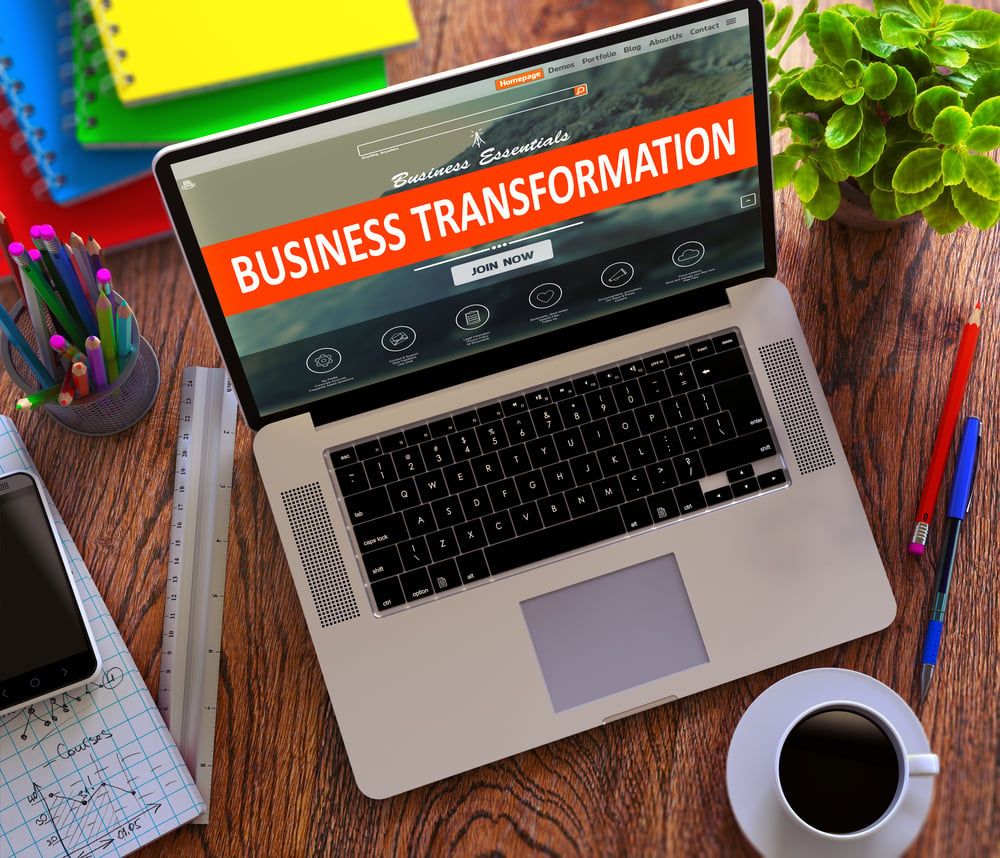The Four Cornerstones of Successful Business Transformation
There has never been an era when business transformation was not critical from Adam Smith to Henry Ford to Bill Gates, but in today’s rapidly...

The path to business resiliency is paved by digital transformation as companies that implement a fully digital process strategy – whether on-premises, cloud, or hybrid – are in a far better position to achieve sustainable profitability and competitiveness.
The trick is to move to a completely digital process environment and to do so in such a way that your systems are integrated and nimble enough to change quickly as market forces demand.
As market demands intensify and customer expectations rise, organizations face increasing pressure to optimize productivity and revenue.
Achieving business resiliency requires a proactive approach to leverage digital process transformation, particularly in the context of ERP modernization.
As the speed of business continues to accelerate, the forces that erode productivity and revenue grow stronger.
Even prior to the pandemic and changing consumer expectations, and the launch of AI applications that heralded the next age of a digital-first world, business leaders were struggling to keep up with the pace of business.
“It has become something of a cliché to hear that the pace of change in business continues to accelerate. Yet based on the evidence from thousands of in-depth interviews with senior executives, it’s apparent that here is some truth to the claim,” said the IBM Institute for Business Value in 2017. “Traditional annual cycles of strategy planning are too long when major external forces can drastically change over a three- to six-month period.”
Fast forward seven years and the external forces changing every three to six months might seem like a luxury for businesses as today’s powerful market forces are demanding products faster and cheaper.
At the same time, customers are expecting levels of service behind what’s currently achievable – putting enormous levels of stress on systems, both manual and digital.
“The half-life of relevance has never been shorter, and it’s no wonder: Technology advancements, cultural shifts, pandemics, and global conflicts are reshaping the world at record pace. And the resulting change isn’t just happening faster — it’s happening in a more profound way,” said a Harvard Business Review article. “Meeting these needs — and unlocking the next great wave of growth for businesses globally — requires a new approach.”
While you might still find some small manufacturers still creaking along on completely manual processes, almost all businesses, from Main Street to Wall Street, have embraced some level of automation.
McKinsey in “How COVID-19 has pushed companies over the technology tipping point – and transformed business forever” found that the pandemic speeded the adoption of digital technologies by several years – and that many of these changes could be here for the long haul.
“To stay competitive in this new business and economic environment requires new strategies and practices,” said the McKinsey article.
Some companies are running multiple systems for financials, sales, production, and processes, while others are running enterprise-wide ERP systems.
These pitfalls of this digital transformation come in the form of a lack of integration, digital systems that become outdated, and the remaining manual processes:
The digital age started more than 30 years ago, but the technological advances made in just the past few years have been exponentially bigger and more impactful than any that came before.
“There are no signs that these trends are hitting any limits anytime soon. To the contrary, particularly over the course of the last decade, the fundamental trends have accelerated: investments in AI technology have rapidly increased, and the doubling time of training computation has shortened to just six months,” writes Max Roser in “The brief history of artificial intelligence: The world has changed fast – what might be next?”.
Today’s most successful businesses are taking advantage of the promise of digital.
For example, tablets and smartphones make it possible to submit customers’ orders from the field, compressing the order to fulfillment time. This would not have been possible just a few years ago.
Other ways that businesses are taking advantage of digital advancements:
Embracing digital advancements can significantly impact different aspects of a business, leading to increased efficiency, improved customer experiences, and ultimately, enhanced business resilience.
This is about more than just technology. It’s about having the right technology to fit the way you do business and incorporating that technology into a resilient digital process environment.
Whether you choose an end-to-end ERP system or go the route of having multiple systems based on functional area, what’s most important is that you address all the processes executed under your roof.
ERP will not address every process, so you need to have a system that:
The functional area model is a bigger challenge, requiring deeper due diligence and oversight to assure that each system can communicate with each of the others and that reporting from each department can be standardized for roll-ups to senior management.
Successfully transforming your business into a resilient enterprise is a complex journey that begins with an objective, thorough, department-by-department analysis of your business as it is and your business as you would like it to be.
In other words, before starting your digital transformation journey you need a roadmap, showing the path your business has traveled to this point and where you want your business to head in the future.
A McKinsey Global Survey said that the three core actions predictive of a business transformation that captured the most value included:
Engaging an outside consulting organization to lead a digital transformation project dramatically increases the success rate by cutting through the natural bias of each department lead, clarifying the company vision, and assuring the plan is not delayed by other priorities.
Forrester research found that “In recognition of the scarcity of skills in many businesses and the goal of increasing speed-to-market (and with customer satisfaction on the line), most businesses leverage the resources and expertise of third-party solution providers and partners for at least some components of their digital strategy. As digital transformation pervades all areas of the business, however, decision-makers increasingly look for their vendors to serve as ongoing strategic partners rather than simple implementers of point solutions.”
Moving to a fully digital process environment will increase competitiveness, profitability, and resiliency as technological advances usher in a new digital age.
However, taking advantage of the benefits means getting involved sooner rather than later. To continue waiting is to allow your competitors to get farther ahead, putting your company in a precarious position.
“Many organizations get stuck in the starting blocks, wasting valuable time, energy, and momentum,” says McKinsey.
Contact KnowledgePath Consulting today if your company is ready for a technology-enabled business transformation that is fully independent, transparent, and vendor-neutral while optimizing your bottom line by addressing your people and processes.

There has never been an era when business transformation was not critical from Adam Smith to Henry Ford to Bill Gates, but in today’s rapidly...

Manufacturers understand in today’s digital-first world that embracing digital transformation is no longer an option but a necessity but implementing...

6 min read
…and does it really apply to me? Organizations often find themselves in the position of replacing or upgrading their Enterprise Resource...